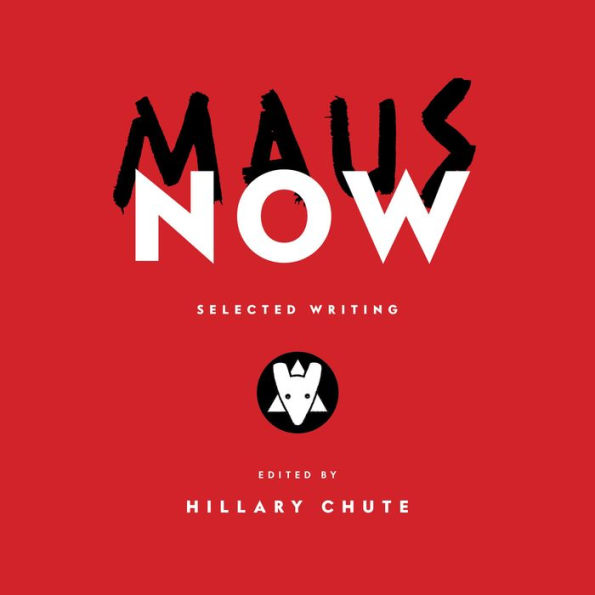Read an Excerpt
“The Shadow of a Past Time”: History and Graphic Representation in Maus
By Hillary Chute
In In the Shadow of No Towers, his most recent book of comic strips, Art Spiegelman draws connections between his experience of 9/11 and his survivor parents’ experience of World War II, suggesting that the horrors of the Holocaust do not feel far removed from his present-day experience in the twenty-first century. “The killer apes learned nothing from the twin towers of Auschwitz and Hiroshima,” Spiegelman writes; 9/11 is the “same old deadly business as usual” (np). Produced serially, Spiegelman’s No Towers comic strips were too politically incendiary to find wide release in the United States; they were largely published abroad and in New York’s weekly Jewish newspaper, the Forward. In the Shadow of No Towers powerfully asserts that “the shadow of a past time [interweaves] with a present time”; to use Spiegelman’s own description of his Pulitzer Prize–winning two-volume work Maus: A Survivor’s Tale (Silverblatt, 35). In one telling panel there the bodies of four Jewish girls hanged in World War II dangle from trees in the Catskills as the Spiegelmans drive to the supermarket in 1979.
The persistence of the past in Maus, of course, does figure prominently in analyses of the text’s overall representational strategies. We see this, for instance, in Dominick LaCapra’s reading of the book’s “thematic mode of carnivalization” (175), Andreas Huyssen’s theorizing of Adornean mimesis in Maus, and Alan Rosen’s study of Vladek Spiegelman’s broken English.3 Most readings of how Maus represents history approach the issue in terms of ongoing debates about Holocaust representation, in the context of postmodernism, or in relation to theories of traumatic memory. But such readings do not pay much attention to Maus’s narrative form: the specificities of reading graphically, of taking individual pages as crucial units of comics grammar. The form of Maus, however, is essential to how it represents history. Indeed, Maus’s contribution to thinking about the “crisis in representation,” I will argue, is precisely in how it proposes that the medium of comics can approach and express serious, even devastating, histories.
“I’m literally giving a form to my father’s words and narrative,” Spiegelman observes about Maus, “and that form for me has to do with panel size, panel rhythms, and visual structures of the page” (Interview with Gary Groth, 105, emphasis in original). As I hope to show, to claim that comics makes language, ideas, and concepts “literal” is to call attention to how the medium can make the twisting lines of history readable through form.
When critics of Maus do examine questions of form, they often focus on the cultural connotations of comics rather than on the form’s aesthetic capabilities—its innovations with space and temporality. Paul Buhle, for instance, claims, “More than a few readers have described [Maus] as the most compelling of any [Holocaust] depiction, perhaps because only the caricatured quality of comic art is equal to the seeming unreality of an experience beyond all reason” (16). Where Michael Rothberg contends, “By situating a nonfictional story in a highly mediated, unreal, ‘comic’ space, Spiegelman captures the hyperintensity of Auschwitz” (Traumatic Realism, 206), Stephen Tabachnick suggests that Maus may work “because it depicts what was all too real, however unbelievable, in a tightly controlled and brutally stark manner. The black and white quality of Maus’s graphics reminds one of newsprint” (155). But all such analyses posit too direct a relationship between form and content (unreal form, unreal content; all too real form, all too real content), a directness that Spiegelman explicitly rejects.
As with all cultural production that faces the issue of genocide, Spiegelman’s text turns us to fundamental questions about the function of art and aesthetics (as well as to related questions about the knowability and the transmission of history: as Hayden White asserts, “Maus manages to raise all of the crucial issues regarding the ‘limits of representation’ in general” [42]). Adorno famously interrogated the fraught relation of aesthetics and Holocaust representation in two essays from 1949, “Cultural Criticism and Society” and “After Auschwitz”—and later in the enormously valuable “Commitment” (1962), which has been the basis of some recent important meditations on form. In “Cultural Criticism” Adorno charges, “To write poetry after Auschwitz is barbaric” (34). We may understand what is at stake as a question of betrayal: Adorno worries about how suffering can be given a voice in art “without immediately being betrayed by it” (“Commitment,” 312); we must recognize “the possibility of knowing history,” Cathy Caruth writes, “as a deeply ethical dilemma: the unremitting problem of how not to betray the past” (27, Caruth’s italics). I argue that Maus, far from betraying the past, engages this ethical dilemma through its form. Elaborating tropes like “the presence of the past” through the formal complexities of what Spiegelman calls the “stylistic surface” of a page (Complete Maus), I will consider how Maus represents history through the time and space of the comics page.



